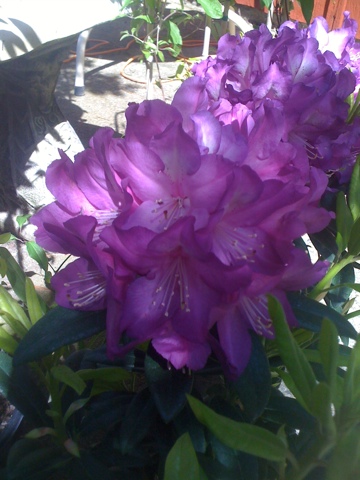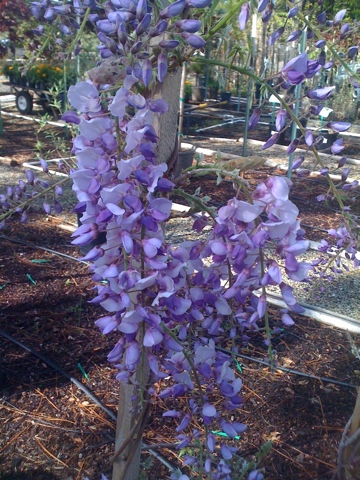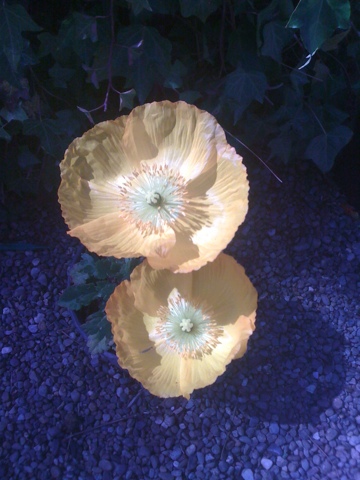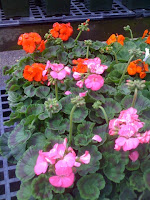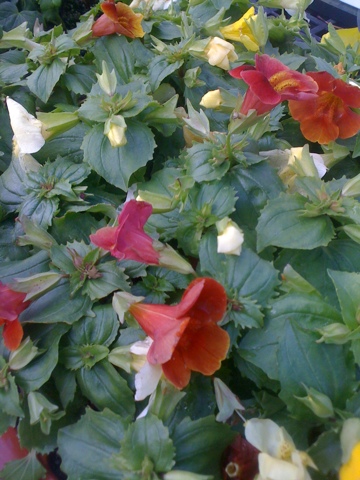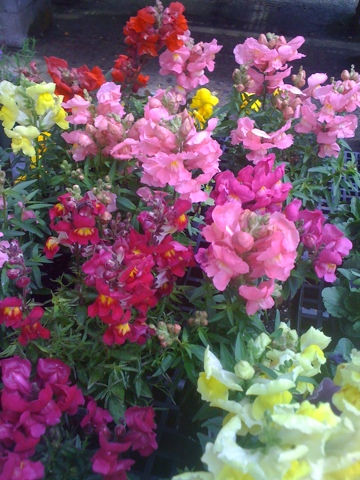Saturday, April 28, 2012
Snow Angel Coral Bells
This hardy perennial grows 10 to 12 inches tall in full to part sun. Brightly variegated, creamy white and green leaves and and bears medium pink flowers in spring and early summer. Hardy to minus 30 degrees F.
Friday, April 27, 2012
Lavender Lady Lilac
A truly outstanding lilac noted for its large trusses of pink blush flowers. Captivating fragrance is a bonus. Grows full to part sun to 10 feet tall and 6 feet wide. Hardy to minus 30 degrees F.
Holden Rhododendron
Compact evergreen grow 4 feet tall and 5 feet wide. Rose red blooms in midseason. Foliage is a glossy, leathery dark green. Hardy to minus 15 degrees F.
Purple Passion Rhododendron
Evergreen hybrid growing 6 feet tall and 4 feet wide with a vase shaped habit. Deep rich purple blooms in spring. Disease and pest resistant. Plant in part shade. Hardy to minus 25 degrees F.
Carolina Chinese Wisteria
Twining, woody vine valued for its drooping clusters of extremely fragrant purple flowers. Plant in full to part sun. Hardy to minus 20 degrees F.
Tuesday, April 24, 2012
Japanese Painted Fern
Hardy semi-evergreen fern with silver variegated 6 inch wide fronds growing 12 inches long. Foliage dies down in winter and returns in spring. Deer resistant. Great with azaleas, hostas, and camellias. Plant in shade to part shade. Hardy to 0 degrees F.
Ostrich Fern
Deciduous fern 3 feet tall and wide for any climate. Dies back in the winter but comes back in the spring. Has beautiful green color and is easy to grow. Grows in shade to part shade. Hardy to minus 40 degrees F.
Tassel Fern
Handsome, dense and lacey, upright, course fronds are up to 2 feet tall. Very easy to grow evergreen and symmetrical plant. Blends well with hostas and rhododendrons. Hardy to 20 degrees F.
Thursday, April 19, 2012
Candytuft Iberis Sempervirens
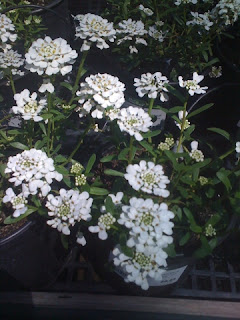
Red & White Winky Columbine
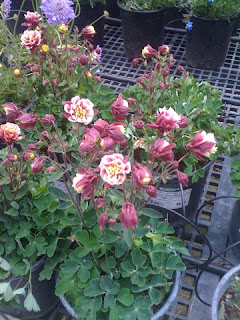 Aquilegia Winky
Aquilegia WinkyAiry clump-forming perennials with cup-shaped upright flowers. Silvery shade foliage with flowers dancing on top. Grows about 15 inches tall in full to part sun. Cut back after bloom for a quick second bloom. Hardy to minus 40 degrees F.
Butterfly Blue Pincushion
Blue blooms from spring to fall and grows to about 1 foot tall. Plant in front of a flower border or cottage garden. Hardy to minus 30 degrees F.
Iceland Poppy
This perennial grows in full sun to about 18 inches. Blooms from April to September with a mix of colors including orange, yellow, salmon, gold, coral, and white flowers on hairy stems. Hardy to minus 50 degrees F.
Weeping Candy Apple
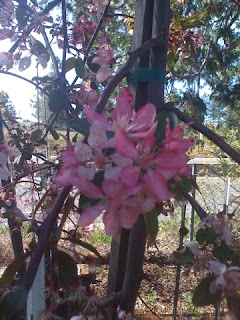 Malus Weepcanzan
Malus WeepcanzanThe foliage is dark green with a red overcoat. Pink flowers cover this tree in the spring, and the showy, fall fruit lasts well into December. Grows 15 feet tall and wide. Hardy to minus 20 degrees F.
Tuesday, April 17, 2012
Oranges & Lemons Blanket Flower
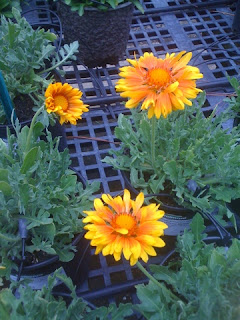 Gaillardia Grandiflora Oranges & Lemons
Gaillardia Grandiflora Oranges & LemonsDaisy flowers with peach orange center and golden yellow petal tips. Grows 24 inches tall in full sun blooms June to October. Grows upright. Good for borders, containers, rock gardens, and for cut flowers. Hardy to minus 20 degrees F.
Neon Star Dianthus
Grows six to nine inches tall and wide in full sun. Blossoms of bright neon magenta flowers over silvery blue foliage. Hardy to minus 30 degrees F.
Saturday, April 14, 2012
Precision Pink Ivy Geranium
Trailing plants that grows 2 to 3 feet. Flowers in clusters of pink. Needs protection from cold winter weather. Great for hanging baskets, window boxes, and trailing down the face of a wall.
Precision Scarlet Red Ivy Geranium
Trailing plants that grow 2 to 3 feet. Flowers in clusters of scarlet red. Needs protection from cold winter weather. Great in hanging baskets, window boxes, and trailing down the face of a wall.
Ruby Bells Coral Bell
 Heuchera Ruby Bells
Heuchera Ruby BellsThis semievergreen woodland perennial has green foliage with many ruby red bell shaped flowers growing to about 14 inches. Grows full sun to partial shade. Flowers are slightly fragrant. Hardy to minus 40 degrees F.
Fire Star Dianthus
Versatile and easy to grow in full sun. Vivid fire red blooms with a darker crimson around the eye. Grayish green leaves and lovely fragrance of clove. Grows 8 inches tall and wide. Hardy to minus 30 degrees F.
Ivy Geraniums
Trailing plants that grow to 2 or 3 feet. Can be single or double flowers in clusters of white, pink, red, violet and lavender. Needs to be protected in cold winters. Great for hanging baskets or for trailing over walls or window boxes.
Garden Geranium
Magic Mix Monkey Flower
Large, tubular flowers in a huge range of colors on small, bushy plants with oval shaped green leaves. Great for gardens, beds, containers, and patios. Grows 5 to 12 inches tall in full sun. Blooms early to late summer. Hardy to zero degrees F.
Tuesday, April 10, 2012
Pansy Delta Fire Viola x wittrockiana
Pansy Delta Fire is a beautiful and eye-catching plant that is a favorite among gardeners worldwide. Its botanical name is Viola x wittrockiana, and it belongs to the Violaceae family. The plant is known for its bright, fiery colors, which range from orange to red, with yellow and white accents. The petals are arranged in a unique pattern, with three large petals at the bottom and two smaller ones on top.
Pansy Delta Fire is a hardy plant that can tolerate cold temperatures and even light frosts. It is an excellent choice for gardeners in colder climates who want to add some color to their gardens early in the season. It blooms in early spring and can continue to bloom until the summer heat sets in. The plant grows up to six inches tall and spreads to about eight inches wide.
One of the most striking features of Pansy Delta Fire is its vibrant color. The petals are a deep, saturated red, with a bright orange center that fades to yellow at the edges. The contrast between the warm colors is stunning and draws the eye immediately. The flowers are also quite large, measuring up to three inches in diameter.
In addition to its beauty, Pansy Delta Fire is also a low-maintenance plant that is easy to grow. It prefers well-draining soil and full sun or partial shade. The plant needs regular watering, but it is essential not to overwater, as this can cause root rot. Fertilizer can also help to promote healthy growth and abundant blooms.
Pansy Delta Fire is a versatile plant that can be used in a variety of garden settings. It looks lovely in flower beds and borders, as well as in containers and hanging baskets. The plant can also be used to add color to rock gardens or as a ground cover. Pansy Delta Fire is often used in mass plantings to create a bold statement and provide a stunning display of color.
In conclusion, Pansy Delta Fire is a beautiful and hardy plant that is easy to grow and maintain. Its fiery colors and unique petal arrangement make it a standout in any garden setting, and its versatility makes it a popular choice among gardeners. Whether you're a beginner or an experienced gardener, Pansy Delta Fire is a plant that is sure to impress.
Snapdragon Tahiti Mix
Early mix of standard flowers on dwarf plants. Use in gardens and containers. Plant in part sun to shade. Grows 8 inches tall and 6 inches wide. Beautiful border color from fall through early spring.
Friday, April 6, 2012
Blue Chip Juniper
Superior evergreen ground cover displaying silver-blue foliage on a widely spreading habit. Rich color all year. 1 foot tall and 6 feet wide. Full sun to part shade. Deer resistant. Hardy to 40 below 0 F.
Thursday, April 5, 2012
Deep Pink Heather
This evergreen spreading shrub grows to about 2 feet tall and 2 feet wide. Deep pink blooms appear in late fall through winter. Plant in sun to light shade. Hardy to 0 degrees F.
Emerald Carpet Manzanita
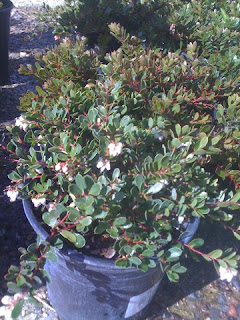 Arctostaphylos Emerald Carpet
Arctostaphylos Emerald CarpetUniform mounds 9 to 14 inches tall, and 5 feet wide with very small pink flowers in spring. Bright green, oval leaves that are 1/2 inch long. Grows in full sun. Tolerates poor soil. Hardy to 0 degrees F.
Old Fashioned Bleeding Heart
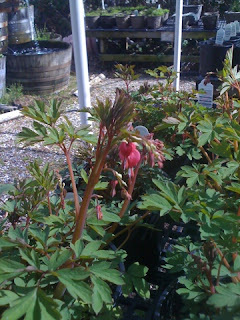 Dicentra Spectabilis
Dicentra SpectabilisStriking flowers attract hummingbirds to the garden and are excellent cut. Grows 30 inches tall and 36 inches wide. Plant in cool, moist sites to prevent summer dormancy, or combine with hosta or ferns to fill in for the dicentra during hot, dry seasons. Attractive ferny leaves. Hardy to minus 50 degrees F.
Wednesday, April 4, 2012
Weed Pulling Time
The best time to pull weeds is when they first appear and the ground is still moist from winter weather. The small roots makes it easier to get all of the plant. Combine that with soft easy to dig soil, and you have the perfect weeding environment. So get out there now and save yourself some trouble later on when weeds are larger and the soil is tougher. Happy Weeding!
Monday, April 2, 2012
Daphne Odora Marginata
Evergreen shrub prized for beautiful rosy pink flowers that open to white, sweetly fragrant. A great foundation plant where the soil is well drained. Grows 3 to 4 feet in partial sun. Hardy to 0 degrees F.




